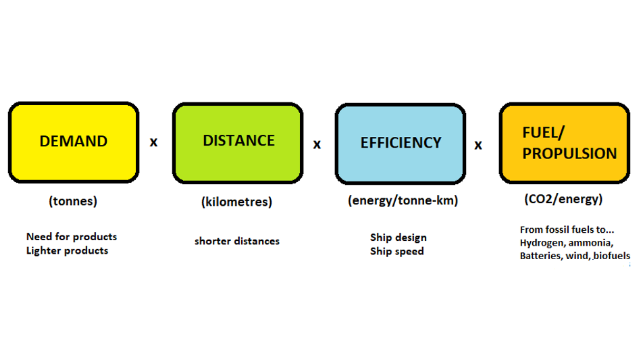U.S. Shipowners Back Jones Act Penalties for "Canadian Rail" Scheme
Four American shipowners are supporting a multi-million-dollar Jones Act enforcement action against affiliates of American Seafoods Company, a Washington-based fishing vessel operator with a leading position in the Alaska pollock fishery.
ASC and its logistics affiliate Alaska Reefer Management (ARM) have access to a 100-foot-long "railway" in New Brunswick, Canada, which they use as part of a foreign-flag shipping route between two U.S. markets. The on-site rail line takes advantage of an obscure grandfather clause in the Jones Act: This so-called "Third Proviso" allows foreign-flag ships to carry cargo in U.S. domestic trade if a properly registered Canadian railway is part of the shipment route.
Using this clause, ARM-chartered foreign vessels load ASC's pollock in Dutch Harbor, Alaska, then deliver it to a terminal in New Brunswick, Canada, passing through the Panama Canal. At the Bayside terminal in New Brunswick, the cargo is offloaded into truck trailers and processed through the on-site Bayside Canadian Railway.
The "BCR" consists of two flat-deck rail cars and a shunt engine on a short track. In operation, this railway carries each truckload of ASC's fish to the end of the track and back again, making a one-minute Canadian rail journey of about 200 feet (video above).
After this rail segment, trucks drive the product to the Maine border and deliver it to the Eastern United States, completing a foreign-flag shipment of cargo between two U.S. points. With the rail segment, ASC and ARM believe that the route complies with the Jones Act.
Last month, U.S. Customs and Border Protection's Jones Act enforcement office issued penalties totaling about $350 million dollars to the firms involved in this novel supply network, including tens of millions in fines for foreign-flag shipowners. The action has effectively halted ASC shipments of pollock to East Coast customers, and ASC says that the shutdown threatens to cause significant harm to its business - along with regional shortages of pollock, an affordable staple for schools, institutions and government nutrition programs. ARM and terminal subsidiary Kloosterboer have filed suit against CBP, seeking to block the penalties.
Impact on American shipping companies
On Friday, a group of four American shipping lines filed briefs in support of the CBP penalty action. According to Coastal Transportation, Matson Lines, Samson Tug and Barge and Alaska Marine Lines, ASC's Bayside program has cost them business and cut into the number of cargoes that are legally reserved for Jones Act vessel operators.
"Coastal has been harmed over many years by the scheme to ship cargoes on foreign-flag vessels from Alaska to destinations in the United States . . .via use of a contrived Canadian rail apparatus, abuses of through shipment and storage in a foreign cold storage," wrote Coastal founder and owner Peter Strong.
Strong welcomed CBP's enforcement action and said that it appears to be working: Alaskan fishing operators are now giving the Seattle-based shipping line "substantially" more cargo volume.
Coastal and the other lines said that they believe that U.S. Jones Act carriers "will be able to carry all future catches of Alaska seafood intended for the lower 48 states to Washington State" if CBP's penalty decision holds. From Washington, containers of seafood would be transported overland to their final destinations by U.S. railroads or trucking.
In a filing Thursday, ARM president Per Brautaset countered that Matson, Coastal, AML and Samson may not have the capability to move that much extra cargo from Dutch Harbor to Seattle in time. He told the court that two of these Jones Act carriers are already so backed up with current cargo volume that they are having a hard time picking up more fish from ASC's storage warehouses in Dutch Harbor.
"Even if these four companies, collectively, could timely move all of our shippers’ B-season pollock to the West Coast, none of these companies is in a position to move that product to the East Coast," warned Brautaset. "Cold storage availability and cross-country transportation options are not in their control. [Our] shipper-customers would be faced with frozen seafood arriving on the West Coast with nowhere to store all of it and no way to further transport it to the Eastern U.S."
ASC says the enforcement action is delaying the delivery of millions of pounds of American-caught fish, and it wants the court to block CBP's penalties until the appeals process is complete.
"Approximately 1.5 million pounds will be overdue for delivery to customers by end of September, approximately three million pounds likely at risk for October requirements; and several million pounds due in November and December, for which plans are unknown at present," wrote ASC President Inge Andreassen in a filing. "Unless we are able to resume the [foreign-flag] shipment of frozen seafood product to the Eastern U.S., ASC faces the likelihood of immediate irreparable harm."











